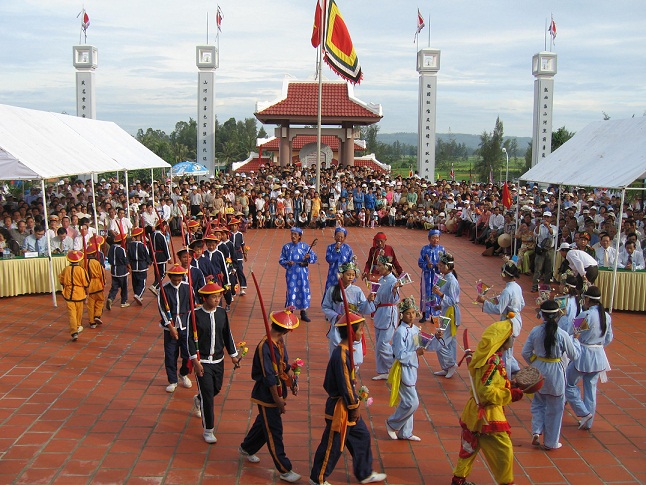Sac Bua singing (hat Sac Bua). A song to celebrate the traditional New Year. A group of 14 to 16 people singers go from house to house from the night of the New Year’s Eve (last day of the 12th lunar month) to the 15th day of the 1st lunar month.
The group includes one called Ong Cai Sac, a Ong Truoc Quy (the driver of devils), a child playing the role of the devil (quy), and a man beating a tom-tom. The group chant sacramental formulae. The Ong Cai Sac, wearing an immortal’s dress in paper decorated with dragons and phoenixes, holds a wood stick to which a string of small bells (Luc Lac) is tied. Wearing the same dress, the driver of devils holds a wood sword. The man beating the tom-tom and all the team wear black tunics and white trousers. The ritual is composed of two parts: the devil’s capture and songs of good luck for the New Year.
Before the entrance of the group into a house, the child playing the devil enters stealthily, hiding himself under a bed or behind a door. The Cai Sac and the driver of devils sing a song condemning the devil before driving it away from the house. The devil cries out for mercy; the Cai Sac gives the orders to drive him away. Then, all the group enters the house to sing their wishes for a good New Year and attach two talismans onto the columns in front of the altar of ancestors, or on both leaves of the great door. The master of the house expresses his thanks by rewarding them with gifts.






